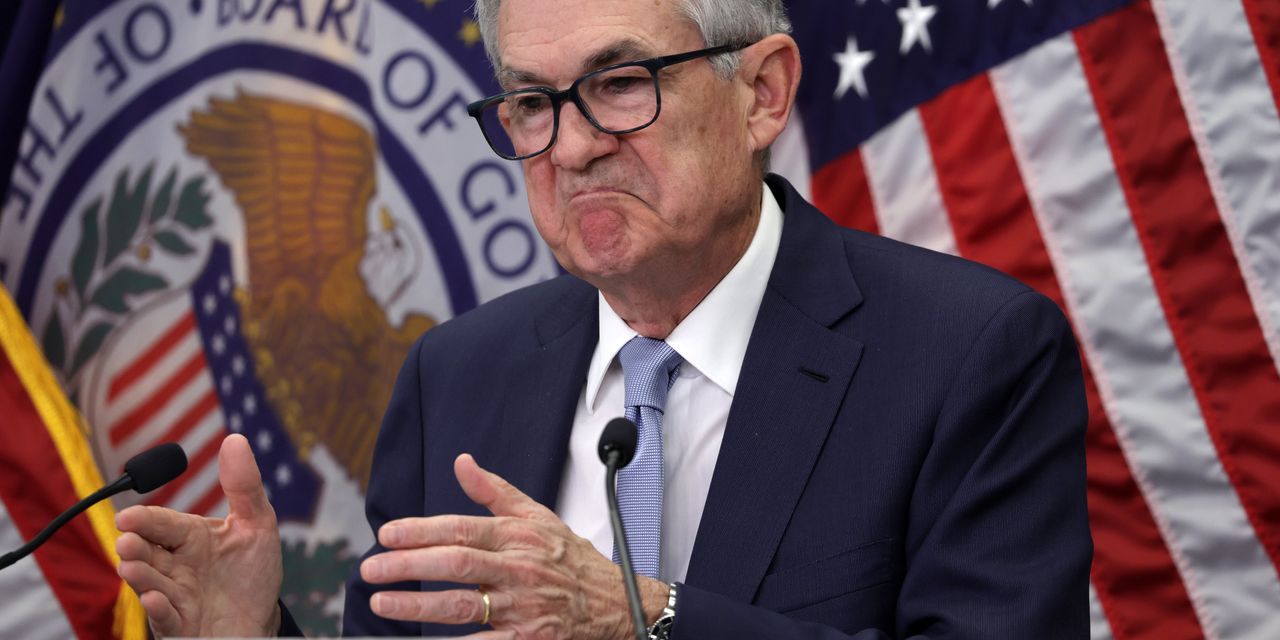Financial markets finally absorbed the Federal Reserve’s stridently hawkish interest-rate outlook for 2023, weighing the prospects of a 5%-plus level in borrowing costs in the new year against fresh signs of a weakening U.S. economy.
A bigger-than-expected drop in November’s retail sales plus weak regional manufacturing data this week added to the growing impression that the world’s largest economy is about to tip into a recession in 2023. U.S. stocks booked back-to-back weekly losses on Friday, a day after the Dow Jones Industrial Average
DJIA,
finished with its worst day in three months.
Wednesday’s initial skepticism in some corners of the financial market to the Fed’s higher-than-expected 2023 median rate projection of 5.1% and need to keep rates up for longer was replaced by investors’ gradual realization on Thursday and Friday that the central bank might actually do what it says — just as the world’s largest economy appears to be teetering. The Fed’s main policy rate target currently sits between 4.25% and 4.5%, up from almost zero at the start of this year.
“To some extent, markets are still digesting the takeaways from the Fed’s dot plot, the press conference, and the statement,” said Michael Reynolds, vice president of investment strategy at Philadelphia-based Glenmede, which manages $38.5 billion in assets. “There are a lot of different things at play. On one hand, the Fed is going to raise rates more. But on the other hand, that’s also increasing the probability of a recession. Investors may be buying into that fact.”
While the bond market was reacting to “many cross currents” of risk, stock markets were behaving in a “more one-directional” manner and fell as the result of November’s disappointing retail-sales data plus the prospect of more Fed rate hikes in 2023, Reynolds said via phone. “We’ve been waiting for monetary policy to hit the consumer, and now it has — putting a dent in the odds of a soft landing.”
In the hours that followed the Fed’s hawkish emphasis on restoring price stability on Wednesday, financial markets reacted in a surprisingly muted way: Dow industrials and the S&P 500
SPX,
for instance, partially reversed their late-day losses by the end of the New York trading session. And 2-, 10- and 30-year Treasury yields finished the day just slightly higher — suggesting that even bond investors doubted the Fed’s inflation-fighting resolve.
Deutsche Bank’s Jim Reid, Henry Allen and others summed up the FOMC meeting and reaction like this: “You would probably say that [Fed officials] were hawkish, but that the market doesn’t believe they will be,” they wrote in a Thursday morning note.
Sentiment shifted as Thursday’s session wore on after central banks outside the U.S. hiked rates. Just as the Fed did on Wednesday, the Bank of England and the European Central Bank raised borrowing costs by a half-percentage-point each. ECB President Christine Lagarde was especially emphatic about the need to stay the course, saying policy makers could keep hiking rates at their next one to two meetings or possibly more and that policy makers are “in for the long game.”
Read: ECB slows rate hikes, but signals it’s far from done
The Dow Jones Industrial Average logged its worst day since Sept. 13 on Thursday. Then on Friday, the Dow ended down by about 282 points or 0.9%, while the S&P 500
SPX,
fell 1.1% and the Nasdaq Composite dropped 1% — handing all three major stock indexes their first back-to-back weekly losses in about three months.
Pimco global economic advisor Richard Clarida is among those who said this week that avoiding at least a modest recession in the U.S. will be a challenge. Meanwhile, Capital Economics’ Andrew Hunter said he sees a mild downturn in the first half of 2023 “as the Fed’s relentless hawkishness takes its toll.”
“Markets are now realizing, and it’s now sinking in, that the bar for rate cuts next year is going to be really high,” Daniel Tenengauzer, BNY Mellon’s head of markets strategy, said via phone.

